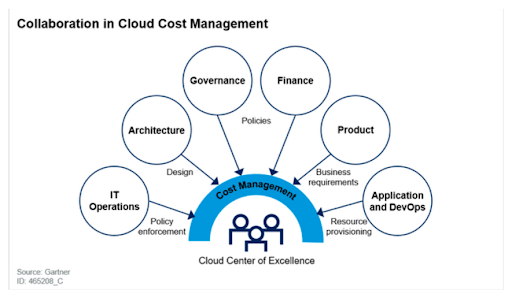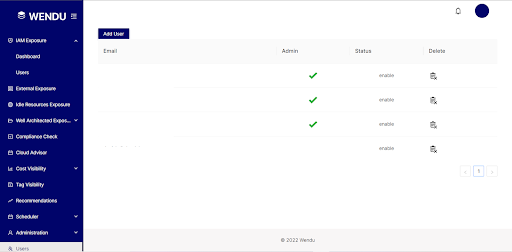
Management Vs Tech team: Who's Responsible?
Cloud costs can quickly get out of control, especially when there isn’t a cloud cost management system in place. This usually occurs when individuals spin up instances across different teams. In order to keep your cloud costs down and stay competitive, you need to be able to manage your cloud costs effectively.
So how then can you manage your cloud cost? Who is responsible for the management of your cloud cost? In this blog post, we will dive deep into cloud cost management, posing the question, who is responsible for effective cloud cost management?
Cloud Cost Management
Cloud cost management is the process of monitoring, controlling, and optimising costs associated with cloud computing. Its processes may include tracking and analysing cloud usage data, monitoring trends, identifying areas for improvement, setting up strategies and taking action based on strategies set to reduce costs.
Cloud Cost Management involves activities such as setting cloud pricing policies, optimising usage, negotiating with cloud providers, implementing automation and other cost-saving measures. It can help organisations to understand and manage their cloud costs, improve resource utilisation, and maximise their cloud investments.
Cloud Cost Management Best Practices
Poor cost management certainly reflects on organisation’s innovation and overall agility. According to a cloud ability survey, more than 57% of respondents experienced a negative business impact due to inefficient cloud cost management. This is because much of the importance is only given to cloud adoption and not cloud management.
In order to leverage the benefits of cloud cost management, organisations should follow a set of best practices which include:
- Monitor and Analyse Your Cloud Costs
Monitoring Cloud Costs is the process of tracking and analysing the costs associated with using cloud investments. It involves keeping an eye on the amount of resources used, such as storage, CPU and memory, and the cost associated with each. It also involves tracking usage and billing information, making sure that all costs are accounted for, and ensuring that the cloud resources are being used effectively and efficiently. Monitoring and analysing cloud costs is essential for understanding where businesses are overspending on their cloud investments.
For monitoring to be effective, you need to monitor your cloud security, cloud costs and cloud infrastructure on a daily basis. You also need to enforce tagging which is the most efficient way of pinpointing, monitoring, and managing all your cloud resources which helps you identify idle resources in your cloud environment. Creating tags that indicate expiration dates, owners, projects, teams, environments, etc., helps you allocate resources to only what is required. When you are done tagging, you need to define metrics and parameters to track daily expenses. Cost metrics will help your organisation gain visibility into what’s going on in your cloud environment and improve cost governance.
In analysing, you monitor network traffic to get the amount of data being sent and received. This can help identify any spikes or usage patterns. You also analyse application usage to analyse usage of specific applications and services in order to identify any patterns in usage which provides valuable insights into usage trends and lastly you analyse monthly reviews of your cloud environment. - Leverage Cloud Cost Management And Optimisation Saas Tools
Leveraging cloud cost management and optimisation Saas Tools help organisations reduce their cloud costs and ensure that their cloud environment is running efficiently.
A major benefit of using these tools is Automation which helps you automate the process of monitoring and analysing. Automation helps to reduce the manual processes and errors associated with manual monitoring and analysing so it is easier to collect data and analyse it quickly. Automation also helps to automate the process of responding to security threat issues and alerting users to potential problems.
You need to automate patching and updates of your cloud environment which will help you to ensure that all of your systems are up-to-date, secure, and running optimally. Also, you need to automate monitoring and logging which will allow you to quickly identify any issues and take corrective action to maintain optimal performance. Lastly, you need to automate security policy enforcement which will help you ensure that your cloud environment is always secure and compliant with industry standards and regulations. - Getting the right team: The management and optimization tools give you the right information, you need the right team viewing and making decisions based on these information and insights from the previous steps listed.
Management or Tech team?
Now, to who’s really responsible for effective cloud cost management. Cloud cost management requires the efforts of both the management and Tech teams.
Just for better context, management here would include the decision makers such as CTOs, CISOs, IT Managers, Engineering Managers—basically those you would expect in the board managerial meetings, who seem to be more responsible for creating and overseeing the strategic plans for the organisation's cloud computing environment.
These guys evaluate the potential risks and benefits of the organisation’s cloud strategies, and determine the best approach for the organisation. They also oversee the implementation of such strategies, and monitor the performance of the system, in terms of security, cost, compliance, etc.
The Tech team would usually consist of the engineers, cloud architects, and those who typically are more hands-on in building and maintaining the cloud infrastructure—deploying and managing applications and services, etc.
Whichever side of the table you find yourself at, it’s paramount to know that you play an important role in effective cloud management.
According to survey monkey only half of all IT decision makers say that final IT purchasing decisions are made by a single decision maker (48%), with the other half requiring a committee or team (52%). Like the point stated earlier, traditionally, cloud adoption and purchasing decisions are made as a collaborative effort between the customers (management) and the users (Tech team). However, when it comes to the management of cloud resources, the ball seems to tip a lot closer, and this varies per organisation, to either side of the table.
So, we ask again…
Who ensures that the best practices are followed and implemented? The answer is, for effective, lean cloud cost management, there needs to be a more collaborative effort between both management and Tech teams.
This is essential in ensuring that cloud cost management strategies are implemented, and managed successfully.
Management teams provide guidance and direction on how the cloud environment should be optimised for cost-efficiency while Tech teams provide the expertise and technical knowledge required to implement these strategies.
Wendu & Team Collaboration For Cloud Cost Management
Premised on the aforesaid about collaboration effort, collaboration between the Management and Tech team will empower the organisation with the insights they need to make smart cost decisions, and will also allow them to reap the maximum benefit of the cloud. To effectively collaborate, Management and Tech teams need a platform that enables them to collaborate on when and where to implement cost-saving measures for the best business outcomes.
Wendu Cloud Security & Cost Management platform enables both technical / non technical managers and employees across the organisation to collaborate without having to do so over a complex management console. This means that as long as you need your organisation’s cloud usage and costs data to run your day-to-day, whether you are a technical or non technical member of the cloud centre of excellence or cloud governance team, Wendu provides such insights for you in the most simplified manner.
Wendu also offers multi-user functionalities, giving everyone a unified view of the cloud estate, enabling full accountability of the organisation’s cloud investment. With Wendu, insights and reports can be exported as csv in the case of team presentations.
Wendu SME & Startup Package
At Wendu, we understand how cost intensive achieving cloud security is for SMEs and Startups, albeit, how important it is to do so. Because of this, we’ve created a special SME and Startup package where we can become long-term cloud security partners that fit into your SME and Startup budgets.
To learn more about Wendu’s SME and Startup package, you can contact us here, with the message ‘Wendu SME and Startup Package’; or if you’d like to learn more about Wendu through a demo, you can request for one here, and we’ll definitely reach out to you in less than 12 hours of your request.